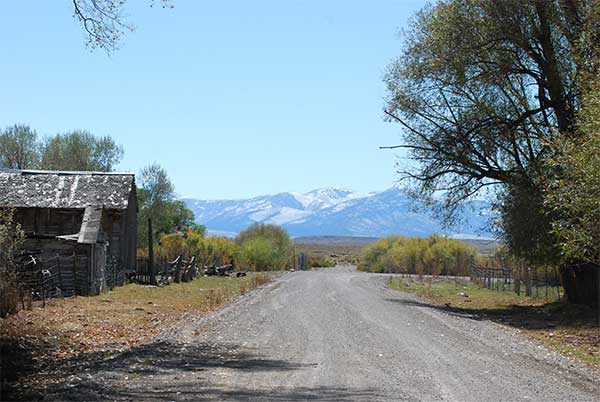|
Goshutes
The Goshutes are a tribe of Western Shoshone Native Americans. There are two federally recognized Goshute tribes today: * Confederated Tribes of the Goshute Reservation, located in Nevada and Utah * Skull Valley Band of Goshute Indians of Utah of the Skull Valley Indian Reservation, located in Utah Culture The Goshute (Gosiute) refer to themselves as the ''Newe'' ɨwɨor ''Newenee'' ɨwɨnɨɨ('Person' or 'People'), though at times have used the term ''Kutsipiuti'' (''Gutsipiuti'') or ''Kuttuhsippeh'', meaning "People of the dry earth" or "People of the Desert" (literally: "dust, dry ashes People"). Neighboring Numic-speaking peoples used variants including ''Kusiutta'' / ''Kusiyuttah'', ''Kusiyuttah,'' ''Newenee'', ''Gusiyuta'', or ''Kusiyutah'' when referring to the Goshute People. English variants included: ''Goshutes, Go-sha-utes, Goship-Utes, Goshoots, Gos-ta-Utes, Gishiss, Goshen Utes, Kucyut, and Gosiutsi''. These names suggest a closer affinity among the Goshute an ... [...More Info...] [...Related Items...] OR: [Wikipedia] [Google] [Baidu] |
Skull Valley Indian Reservation
The Skull Valley Indian Reservation (Gosiute dialect: Wepayuttax) is located in Tooele County, Utah, United States, approximately southwest of Salt Lake City. It is inhabited by the Skull Valley Band of Goshute Indians of Utah, a federally recognized tribe. As of 2017 the tribe had 134 registered members and 15-20 people living on the reservation. Landbase The reservation comprises of land in east central Tooele County, adjacent to the southwest side of the Wasatch-Cache National Forest in the Stansbury Mountains. The reservation lies in the south of Skull Valley, with another range, the Cedar Mountains bordering west. Resident and previous chairman Leon Bear described it as their "beautiful wasteland". History There were records of a flood in 1878, and tribe members recalled large flood events in the 1930s, 1950s, and 1970s. In Fall 2013, a few weeks after the Patch Springs Fire, an intense rainstorm hit the area, causing flooding and mudflows estimated at . The BIA's B ... [...More Info...] [...Related Items...] OR: [Wikipedia] [Google] [Baidu] |
Coyote
The coyote (''Canis latrans''), also known as the American jackal, prairie wolf, or brush wolf, is a species of canis, canine native to North America. It is smaller than its close relative, the Wolf, gray wolf, and slightly smaller than the closely related eastern wolf and red wolf. It fills much of the same ecological niche as the golden jackal does in Eurasia; however, the coyote is generally larger. The coyote is listed as Least Concern, least concern by the International Union for Conservation of Nature, due to its wide distribution and abundance throughout North America. The species is versatile, able to adapt to and expand into environments modified by humans; urban coyotes are common in many cities. The coyote was sighted in eastern Panama (across the Panama Canal from their home range) for the first time in 2013. The coyote has 19 recognized subspecies. The average male weighs and the average female . Their fur color is predominantly light gray and red or fulvous int ... [...More Info...] [...Related Items...] OR: [Wikipedia] [Google] [Baidu] |
Central Numic Languages
Numic is the northernmost branch of the Uto-Aztecan language family. It includes seven languages spoken by Native American peoples traditionally living in the Great Basin, Colorado River basin, Snake River basin, and southern Great Plains. The word Numic comes from the cognate word in all Numic languages for “person”, which reconstructs to Proto-Numic as . For example, in the three Central Numic languages and the two Western Numic languages it is . In Kawaiisu it is and in Colorado River , and . Classification These languages are classified in three groups: * Numic ** Central Numic languages *** Comanche *** Timbisha (a dialect chain with main regional varieties being Western, Central, and Eastern) *** Shoshoni (a dialect chain with main regional varieties being Western, Gosiute, Northern, and Eastern) ** Southern Numic languages *** Kawaiisu *** Colorado River (a dialect chain with main regional varieties being Chemehuevi, Southern Paiute, and Ute) ** Western ... [...More Info...] [...Related Items...] OR: [Wikipedia] [Google] [Baidu] |
Shoshoni Language
Shoshoni, also written as Shoshoni-Gosiute and Shoshone ( ; Shoshoni: soni''' ta̲i̲kwappe'', ''newe ta̲i̲kwappe'' or ''neme ta̲i̲kwappeh''), is a Numic language of the Uto-Aztecan family, spoken in the Western United States by the Shoshone people. Shoshoni is primarily spoken in the Great Basin, in areas of Wyoming, Utah, Nevada, and Idaho. The consonant inventory of Shoshoni is rather small, but a much wider range of surface forms of these phonemes appear in the spoken language. The language has six vowels, distinguished by length. Shoshoni is a strongly suffixing language, and it inflects for nominal number and case and for verbal aspect and tense using suffixes. Word order is relatively free but shows a preference toward SOV order. The endonyms ''newe ta̲i̲kwappe'' and ''Sosoni' ta̲i̲kwappe'' mean "the people's language" and "the Shoshoni language," respectively. Shoshoni is classified as threatened, although attempts at revitalization are underway. Classification ... [...More Info...] [...Related Items...] OR: [Wikipedia] [Google] [Baidu] |
Carex
''Carex'' is a vast genus of over 2,000 species of grass-like plants in the family (biology), family Cyperaceae, commonly known as sedges (or seg, in older books). Other members of the family Cyperaceae are also called sedges, however those of genus ''Carex'' may be called true sedges, and it is the most species-rich genus in the family. The study of ''Carex'' is known as caricology. Description All species of ''Carex'' are perennial plant, perennial, although some species, such as ''Carex bebbii, C. bebbii'' and ''Carex viridula, C. viridula'' can fruit in their first year of growth, and may not survive longer. They typically have rhizomes, stolons or short rootstocks, but some species grow in tufts (caespitose). The culm (botany), culm – the flower-bearing stalk – is unbranched and usually erect. It is usually distinctly triangular in section. The leaf, leaves of ''Carex'' comprise a blade, which extends away from the stalk, and a sheath, which encloses part of th ... [...More Info...] [...Related Items...] OR: [Wikipedia] [Google] [Baidu] |
Deep Creek Valley
Deep Creek Valley is a long valley located in southwest Tooele County, Utah, Tooele County at the Utah-Nevada border; the extreme south of the valley is in northwest Juab County, Utah, Juab County. The valley parallels the west flank of the Deep Creek Mountains, Deep Creek Range, both north-trending. In the north-northeast, its outlet widens into the southwest of the Great Salt Lake Desert region. The mountain range turns southwest and west in the south, and encloses the higher altitude terrain of the valley; here, the Goshute Indian Reservation lies in the mountains and the Deep Creek Valley's south; the community of Goshute, Utah, Goshute is adjacent the valley; the reservation also extends westward into Nevada, into the east of the Antelope Valley (Elko-White Pine Counties), Antelope Valley. Description Deep Creek Valley follows the drainage of the north-flowing Deep Creek (Tooele County, Utah), Deep Creek. In the valley's southern half, from Ibapah, Utah, Ibapah, UT on Deep ... [...More Info...] [...Related Items...] OR: [Wikipedia] [Google] [Baidu] |
Basketry
Basket weaving (also basketry or basket making) is the process of weaving or sewing pliable materials into three-dimensional artifacts, such as baskets, mats, mesh bags or even furniture. Craftspeople and artists specialized in making baskets may be known as basket makers and basket weavers. Basket weaving is also a rural craft. Basketry is made from a variety of fiber, fibrous or pliable materials—anything that will bend and form a shape. Examples include pine, straw, willow (esp. Common osier, osier), oak, wisteria, forsythia, vines, plant stem, stems, fur, Hide (skin), hide, grasses, thread, and fine wooden splints. There are many applications for basketry, from simple mats to hot air balloon gondolas. Many Indigenous peoples are renowned for their basket-weaving techniques. History While basket weaving is one of the widest spread crafts in the history of any human civilization, it is hard to say just how old the craft is, because natural materials like wood, grass, and ... [...More Info...] [...Related Items...] OR: [Wikipedia] [Google] [Baidu] |
Beadwork
Beadwork is the art or craft of attaching beads to one another by stringing them onto a thread or thin wire with a sewing or beading needle or sewing them to cloth. Beads are produced in a diverse range of materials, shapes, and sizes, and vary by the kind of art produced. Most often, beadwork is a form of personal adornment (e.g. jewelry), but it also commonly makes up other artworks. Beadwork techniques are broadly divided into several categories, including loom and off-loom weaving, stringing, bead embroidery, bead crochet, bead knitting, and bead tatting. Ancient beading The art of creating and utilizing beads is ancient, and ostrich shell beads discovered in Africa can be carbon-dated to 10,000 BC. Faience beads, a type of ceramic created by mixing powdered clays, lime, soda, and silica sand with water until a paste forms, then molding it around a stick or straw and firing until hard, were notably used in ancient Egyptian jewelry from the First Dynasty (beginning ... [...More Info...] [...Related Items...] OR: [Wikipedia] [Google] [Baidu] |
Daughters Of Utah Pioneers
The International Society Daughters of Utah Pioneers (ISDUP, DUP) is a women's organization dedicated to preserving the history of the European settlers of the geographic area covered by the State of Deseret and Utah Territory, including Mormon pioneers. The organization is open to any woman who is: (1) A direct-line descendant or legally adopted direct-line descendant with a pioneer ancestor; (2) the pioneer ancestor is a person who traveled to or through the geographic area covered by the State of Deseret/Utah Territory between July 1847 and 10 May 1869 (completion of the railroad, May 10, 1869); (3) over the age of eighteen, and of good character. Travel through the geographic area covered by the State of Deseret/Utah Territory can be either east to west, west to east, north to south, or south to north. History The Daughters of Utah Pioneers was organized 11 April 1901 in Salt Lake City. Annie Taylor Hyde, a daughter of John Taylor (1808-1887), John Taylor, president of the Chur ... [...More Info...] [...Related Items...] OR: [Wikipedia] [Google] [Baidu] |
Internet Archive
The Internet Archive is an American 501(c)(3) organization, non-profit organization founded in 1996 by Brewster Kahle that runs a digital library website, archive.org. It provides free access to collections of digitized media including websites, Application software, software applications, music, audiovisual, and print materials. The Archive also advocates a Information wants to be free, free and open Internet. Its mission is committing to provide "universal access to all knowledge". The Internet Archive allows the public to upload and download digital material to its data cluster, but the bulk of its data is collected automatically by its web crawlers, which work to preserve as much of the public web as possible. Its web archiving, web archive, the Wayback Machine, contains hundreds of billions of web captures. The Archive also oversees numerous Internet Archive#Book collections, book digitization projects, collectively one of the world's largest book digitization efforts. ... [...More Info...] [...Related Items...] OR: [Wikipedia] [Google] [Baidu] |





